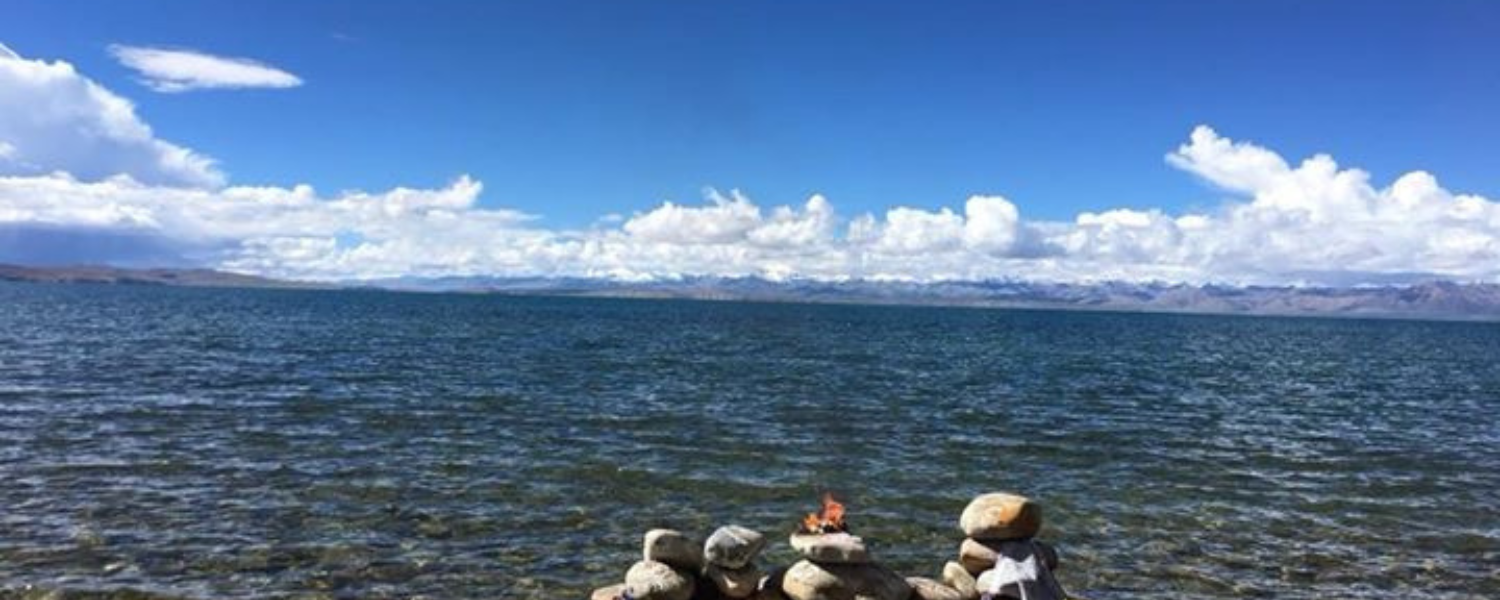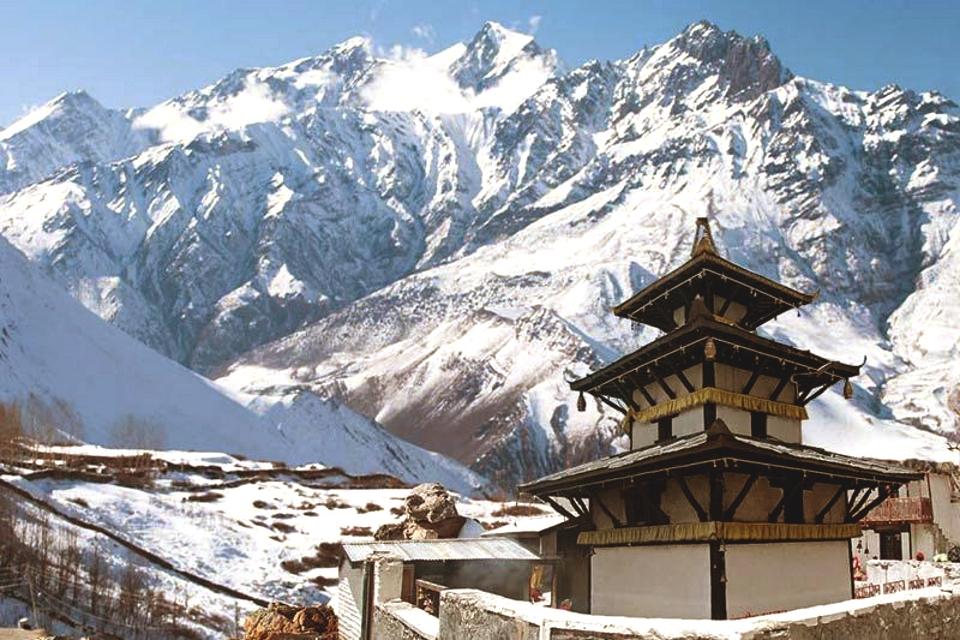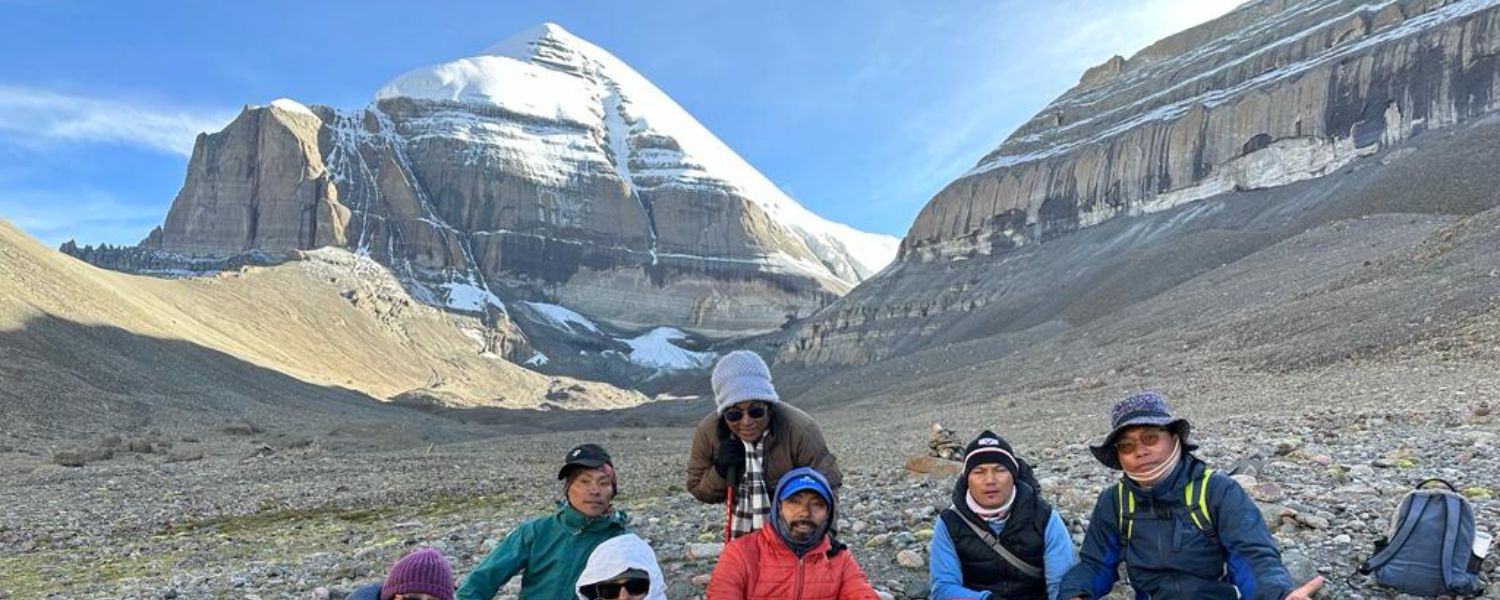Lazimpat, 02 Kathmandu Nepal
Upper Mustang Packages
Upper mustang is best Destination
Upper Mustang is a remote and culturally rich region located in the north-central part of Nepal, nestled between the Tibetan Plateau and the Himalayas. Upper Mustang is situated in the rain shadow of the Himalayas, resulting in a dry and arid landscape with rugged terrain, deep gorges, and towering cliffs. The region is characterized by its high-altitude desert environment, with elevations ranging from 2,800 meters (9,200 feet) to over 4,000 meters (13,000 feet) above sea level.
Upper mustang is best Destination
Upper Mustang have to travel
Upper Mustang is a remote and culturally rich region located in the north-central part of Nepal, nestled between the Tibetan Plateau and the Himalayas.
Geography: Upper Mustang is situated in the rain shadow of the Himalayas, resulting in a dry and arid landscape with rugged terrain, deep gorges, and towering cliffs. The region is characterized by its high-altitude desert environment, with elevations ranging from 2,800 meters (9,200 feet) to over 4,000 meters (13,000 feet) above sea level.
Cultural Heritage: Upper Mustang is renowned for its rich cultural heritage, with a history dating back thousands of years. The region was once a separate kingdom known as the Kingdom of Lo, with its own distinct language, customs, and traditions. Tibetan Buddhism is the predominant religion, and numerous monasteries, chortens (stupas), and mani walls dot the landscape, reflecting the deep spiritual significance of the area.
Historical Sites: Upper Mustang is home to several ancient settlements, cave dwellings, and fortified monasteries that bear witness to its rich history and cultural heritage. The capital of Upper Mustang, Lo Manthang, is a walled city with narrow alleys, whitewashed buildings, and a majestic palace that serves as the residence of the local king (raja). The region is also known for its ancient cave complexes, such as the caves of Chhoser and Chhoser Khola, which contain intricate murals, religious artifacts, and ancient manuscripts.
Trekking and Tourism: Upper Mustang is a popular destination for trekking enthusiasts and adventurous travelers seeking to explore its rugged landscapes, ancient villages, and cultural landmarks. The Upper Mustang Trek, also known as the "Forbidden Kingdom Trek," offers a unique opportunity to experience the region's remote beauty while immersing oneself in its rich cultural heritage. Permits are required to visit Upper Mustang, as it is a restricted area to protect its cultural and environmental integrity.
Natural Beauty: Despite its arid climate, Upper Mustang boasts stunning natural scenery, including dramatic rock formations, deep canyons, and panoramic mountain views. The Kali Gandaki River, which flows through the heart of the region, has carved out a spectacular gorge known as the "Kali Gandaki Canyon," one of the deepest gorges in the world.
Challenges and Conservation: Despite its cultural and natural significance, Upper Mustang faces challenges related to conservation, sustainable development, and cultural preservation. The influx of tourism, changes in land use, and modernization pose threats to the region's fragile ecosystem and traditional way of life. Efforts are underway to promote responsible tourism, community-based conservation initiatives, and cultural preservation efforts to safeguard Upper Mustang for future generations.
Overall, Upper Mustang offers a fascinating blend of cultural heritage, natural beauty, and adventure, making it a must-visit destination for travelers seeking an off-the-beaten-path experience in the heart of the Himalayas.
Traveling in Upper Mustang offers a unique and unforgettable experience, allowing visitors to immerse themselves in the region's rich cultural heritage, stunning landscapes, and ancient traditions. Here's what you can expect from a travel experience in Upper Mustang:
Trekking Adventure: Upper Mustang is a trekker's paradise, offering breathtaking landscapes, rugged terrain, and ancient trails that wind through remote villages, barren deserts, and towering cliffs. The Upper Mustang Trek, also known as the "Forbidden Kingdom Trek," takes travelers on an exhilarating journey through the heart of the Himalayas, offering panoramic views of snow-capped peaks, deep gorges, and traditional Tibetan settlements.
Rich Cultural Heritage: Upper Mustang is renowned for its rich cultural heritage, with a history dating back thousands of years. The region was once a separate kingdom known as the Kingdom of Lo, with its own distinct language, customs, and traditions. Travelers can explore ancient monasteries, fortresses, and cave dwellings that bear witness to the region's fascinating history and cultural legacy.
Historic Villages and Walled Cities: Upper Mustang is home to several historic villages and walled cities, including Lo Manthang, the capital of Upper Mustang. Lo Manthang is a UNESCO World Heritage Site and features a walled city with narrow alleys, whitewashed buildings, and a majestic palace that serves as the residence of the local king (raja). Travelers can wander through the ancient streets, visit monasteries, and interact with the friendly locals.
Natural Beauty: Despite its arid climate, Upper Mustang boasts stunning natural scenery, including dramatic rock formations, deep canyons, and panoramic mountain views. The Kali Gandaki River, which flows through the heart of the region, has carved out a spectacular gorge known as the "Kali Gandaki Canyon," one of the deepest gorges in the world. Travelers can also enjoy the tranquility of high-altitude lakes, sacred springs, and picturesque valleys.
Cultural Encounters: Traveling in Upper Mustang provides opportunities for cultural exchange and interaction with local communities. Visitors can participate in traditional ceremonies, festivals, and rituals, such as Losar (Tibetan New Year) and Saga Dawa, and learn about the customs, beliefs, and way of life of the Tibetan people. Homestays and cultural programs offer authentic experiences of Tibetan hospitality and culture.
Adventure Activities: In addition to trekking, travelers can engage in a variety of adventure activities in Upper Mustang, including horseback riding, mountain biking, and rock climbing. The rugged terrain and pristine natural environment provide endless opportunities for exploration and outdoor adventure.
Overall, a travel experience in Upper Mustang offers a unique blend of adventure, culture, and spirituality, providing travelers with a profound journey through one of Nepal's most remote and culturally rich regions. Whether trekking through ancient trails, exploring historic villages, or immersing oneself in the local culture, Upper Mustang promises unforgettable memories and insights into the heart of the Himalayas.
The weather in Upper Mustang varies depending on the season, but overall, the region experiences a semi-arid climate with distinct seasonal patterns. Here's an overview of the weather conditions in Upper Mustang throughout the year:
Spring (March to May):
Spring is one of the best times to visit Upper Mustang, as temperatures begin to warm up, and the landscape comes alive with blooming flowers and lush vegetation.
Daytime temperatures range from mild to warm, with average highs ranging from 15°C to 20°C (59°F to 68°F) in lower elevations.
Nights can still be chilly, especially at higher altitudes, with temperatures dropping to around 5°C to 10°C (41°F to 50°F).
Spring is also relatively dry, with minimal rainfall, making it an ideal time for trekking and outdoor activities.
Summer (June to August):
Summer in Upper Mustang is characterized by warm temperatures during the day and cool nights, with occasional rainfall.
Daytime temperatures can reach highs of 25°C to 30°C (77°F to 86°F) in lower elevations, but temperatures are generally milder at higher altitudes.
The monsoon season brings intermittent rain showers and overcast skies, particularly in July and August, which can impact trekking and outdoor activities.
Despite the rain, summer is still a popular time to visit Upper Mustang for travelers who don't mind the occasional showers and want to experience the region's lush greenery and vibrant landscapes.
Autumn (September to November):
Autumn is considered the best time to visit Upper Mustang, as the weather is generally stable, with clear skies, mild temperatures, and minimal rainfall.
Daytime temperatures are pleasant, with average highs ranging from 15°C to 20°C (59°F to 68°F) in lower elevations.
Nights start to get colder as the season progresses, especially at higher altitudes, with temperatures dropping to around 5°C to 10°C (41°F to 50°F).
Autumn also offers stunning views of the Himalayas, making it an ideal time for trekking and outdoor adventures.
Winter (December to February):
Winter in Upper Mustang is cold and dry, with temperatures dropping significantly, especially at higher elevations.
Daytime temperatures range from 5°C to 10°C (41°F to 50°F) in lower elevations but can be much colder in the mountains.
Nights are freezing, with temperatures often dropping below zero, particularly at higher altitudes.
Snowfall is possible, especially in January and February, which can impact trekking routes and road accessibility.
Despite the cold weather, winter can still be a beautiful time to visit Upper Mustang for travelers who want to experience the region's serene landscapes and cultural attractions without the crowds.
Overall, the weather in Upper Mustang is characterized by its extreme temperatures and dry climate, with each season offering unique opportunities for exploration and adventure. Travelers should plan their visit according to their preferences and interests, keeping in mind the weather conditions and seasonal changes.
Accommodation options in Upper Mustang are limited due to its remote and rugged terrain, but there are guesthouses, lodges, and basic accommodations available in several villages along the trekking route. Here's what you can expect regarding hotels and lodging in Upper Mustang:
Guesthouses and Tea Houses: Along the trekking route in Upper Mustang, you'll find basic guesthouses and tea houses that cater to trekkers and travelers. These guesthouses typically offer simple rooms with basic amenities such as beds, blankets, and shared bathrooms. While facilities may be basic, guesthouses provide a warm and welcoming atmosphere, and some offer meals and beverages to guests.
Homestays: In some villages in Upper Mustang, travelers may have the opportunity to stay with local families in homestay accommodations. Homestays provide an authentic cultural experience, allowing guests to immerse themselves in the daily life and traditions of the local community. Accommodations may vary from traditional mud-brick houses to more modern dwellings, and guests can enjoy home-cooked meals and hospitality from their hosts.
Camping: Camping is a popular option for trekkers exploring Upper Mustang, especially in more remote areas where guesthouses are scarce. Trekkers can set up tents at designated camping sites or find suitable spots along the trekking route. Camping allows travelers to enjoy the stunning natural scenery of Upper Mustang while experiencing the tranquility of the Himalayan wilderness.
Tented Camps and Luxury Lodges: In recent years, some trekking companies have begun offering tented camps and luxury lodges along the Upper Mustang trekking route to provide more comfortable accommodations for travelers. These tented camps and lodges offer spacious tents or rooms with comfortable beds, hot showers, and dining facilities. While more expensive than basic guesthouses, tented camps and luxury lodges provide a higher level of comfort and service for travelers seeking a more luxurious experience.
Lo Manthang: The capital of Upper Mustang, Lo Manthang, offers a few guesthouses and basic lodges for travelers exploring the area. These accommodations are relatively simple but provide a convenient base for exploring the historic walled city and surrounding attractions.
Overall, while accommodations in Upper Mustang may be basic compared to more developed tourist areas, they offer a unique and authentic experience for travelers seeking adventure in one of Nepal's most remote and culturally rich regions. It's advisable to book accommodations in advance, especially during the peak trekking season, to ensure availability.
Transportation in Upper Mustang, being a remote and rugged region of Nepal, is limited and primarily relies on walking, horseback riding, or off-road vehicles. Here's an overview of transportation options in Upper Mustang:
Trekking: Trekking is the most common mode of transportation for travelers exploring Upper Mustang. The region offers various trekking routes, including the Upper Mustang Trek, which typically begins from the town of Kagbeni and extends to Lo Manthang, the capital of Upper Mustang. Trekkers traverse rugged trails, ancient villages, and high mountain passes while enjoying panoramic views of the Himalayas.
Off-Road Vehicles: In recent years, the construction of rough dirt roads has made it possible to access some parts of Upper Mustang by off-road vehicles, such as jeeps and motorcycles. However, road conditions can be challenging, particularly during the monsoon season when heavy rainfall may cause landslides and washouts. Off-road vehicles are primarily used for transporting goods and supplies to remote villages and settlements.
Horseback Riding: Horseback riding is another traditional mode of transportation used by locals and tourists alike in Upper Mustang. Riding on horseback allows travelers to cover long distances across the rugged terrain while experiencing the region's unique landscapes and cultural heritage. Local guides and horse owners provide trained horses and assist with navigating the trails.
Domestic Flights and Helicopter: While there are no airports within Upper Mustang itself, travelers can fly to nearby towns such as Jomsom or Pokhara and then proceed to Upper Mustang by road or trekking. Jomsom is a popular starting point for treks to Upper Mustang and is accessible by daily flights from Pokhara. However, flights are subject to weather conditions and may be affected by strong winds and poor visibility, particularly during the monsoon season.
Porters and Yak Caravans: In remote areas where vehicles cannot reach, porters and yak caravans are used to transport goods and supplies between villages. Porters carry heavy loads on their backs, while yaks, well-adapted to the high-altitude environment, are employed to transport goods along rugged mountain trails. This traditional form of transportation has been used for centuries in the Himalayan region and continues to play a vital role in Upper Mustang's economy and culture.
Overall, transportation in Upper Mustang is characterized by its rugged terrain, limited infrastructure, and reliance on traditional modes of travel. Whether trekking on foot, riding on horseback, or navigating rough dirt roads by jeep, travelers to Upper Mustang can expect an adventurous journey through one of Nepal's most remote and culturally rich regions.
The culture of Upper Mustang is rich, vibrant, and deeply rooted in Tibetan Buddhist traditions, reflecting centuries of history, spirituality, and resilience in one of Nepal's most remote regions. Here are some key aspects of the culture of Upper Mustang:
Tibetan Buddhism: Tibetan Buddhism is the predominant religion in Upper Mustang and plays a central role in shaping the region's culture, beliefs, and way of life. Monasteries, temples, and stupas are scattered throughout the region, serving as spiritual centers where monks and nuns engage in religious practices, rituals, and ceremonies. The teachings of Tibetan Buddhism emphasize compassion, wisdom, and the pursuit of enlightenment through meditation and virtuous deeds.
Cultural Heritage: Upper Mustang has a rich cultural heritage that dates back to ancient times, with a unique blend of Tibetan, Nepali, and indigenous influences. The region was once a separate kingdom known as the Kingdom of Lo, with its own distinct language, customs, and traditions. Visitors to Upper Mustang can explore ancient settlements, cave dwellings, and fortified monasteries that bear witness to its fascinating history and cultural legacy.
Traditional Festivals: Upper Mustang celebrates a variety of traditional festivals and religious ceremonies throughout the year, which are colorful and vibrant occasions that bring communities together to honor their cultural heritage and spiritual beliefs. Losar, the Tibetan New Year, is one of the most important festivals, marked by elaborate rituals, mask dances, and traditional music performances. Other festivals include Saga Dawa, Tiji Festival, and Yartung Festival, each with its own unique customs and traditions.
Art and Architecture: Upper Mustang is renowned for its exquisite art and architecture, characterized by intricate designs, vibrant colors, and spiritual symbolism. Thangka paintings, intricate tapestries depicting Buddhist deities and scenes from Tibetan mythology, are revered as sacred objects and used in religious rituals and meditation. Tibetan architecture features distinctive styles, including whitewashed buildings, ornate wooden carvings, and prayer flags adorning rooftops and mountain passes.
Cultural Practices: Upper Mustang maintains a strong sense of cultural identity through traditional practices and customs that have been passed down through generations. These include rituals such as prayer flag hoisting, butter lamp offerings, and circumambulation of sacred sites. The practice of prostrating in front of religious monuments and spinning prayer wheels is also common among devout Buddhists seeking merit and spiritual purification.
Hospitality and Community: Upper Mustang is known for its warm hospitality and close-knit community bonds, with locals welcoming visitors with open arms and genuine kindness. Travelers have the opportunity to stay in homestays, interact with local families, and participate in cultural activities, fostering cultural exchange and mutual understanding.
Overall, the culture of Upper Mustang is a testament to the resilience, spirituality, and cultural richness of the Tibetan people, providing travelers with a profound and immersive experience in one of Nepal's most remote and culturally significant regions
Shivam Group have activities
Lazimpat, 02 Kathmandu Nepal
+97714535752, +97714535859
[email protected]
[email protected]
[email protected]
Skype:shivamgrp
Copyright 2025. Shivam Group Holiday. All Rights Reserved.


